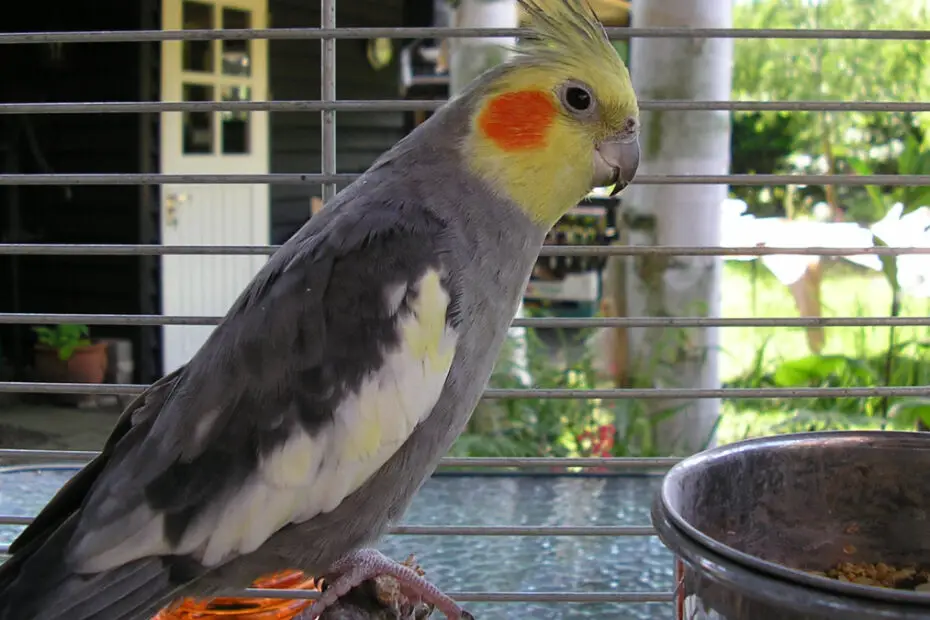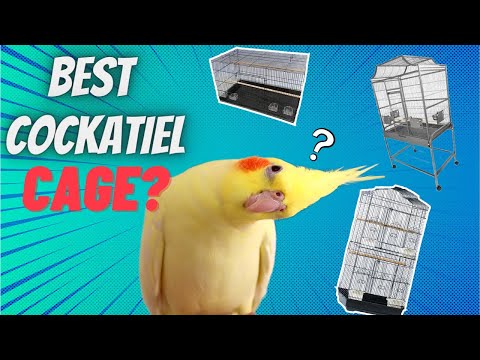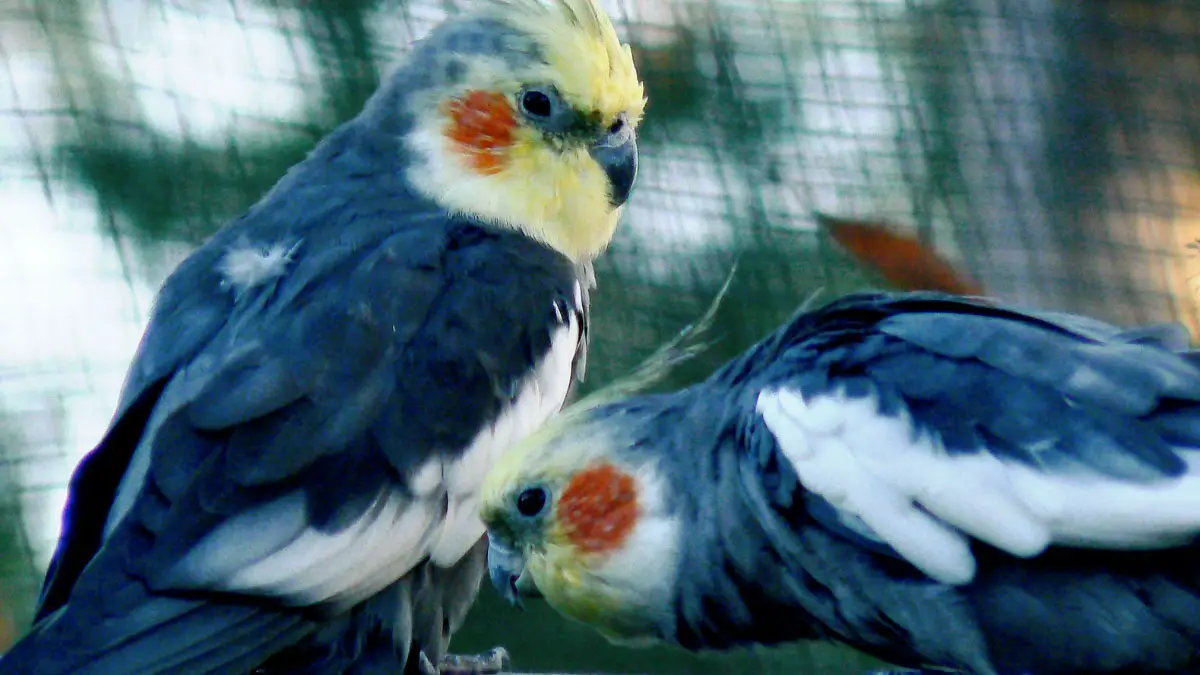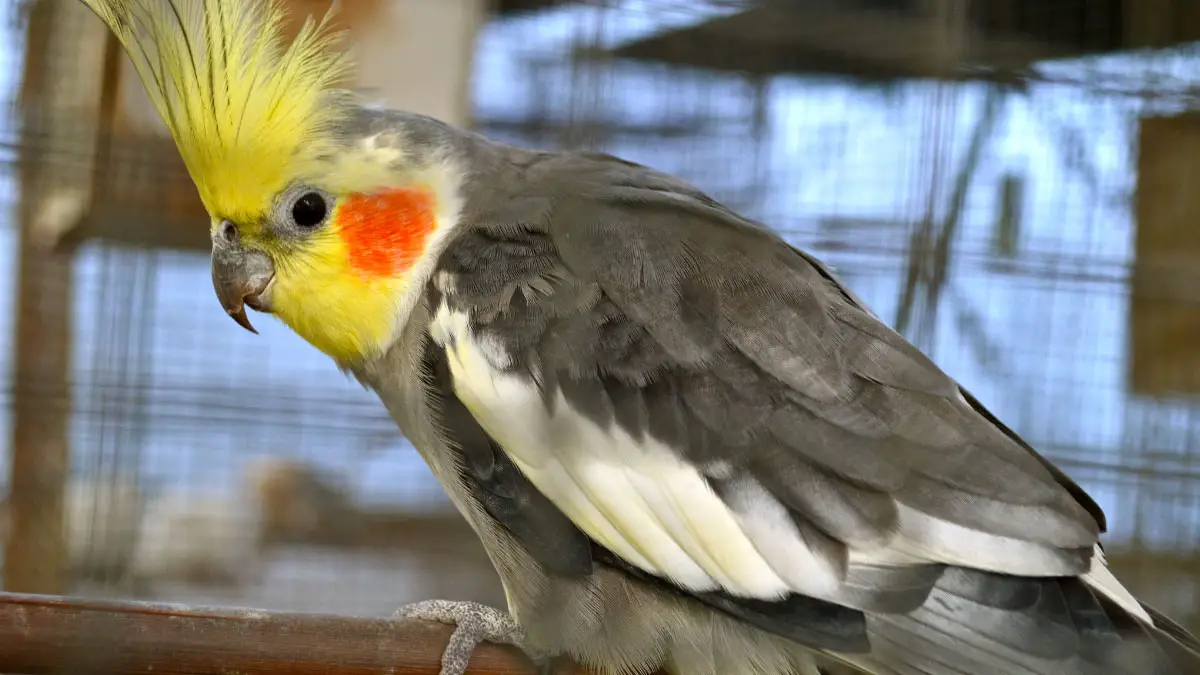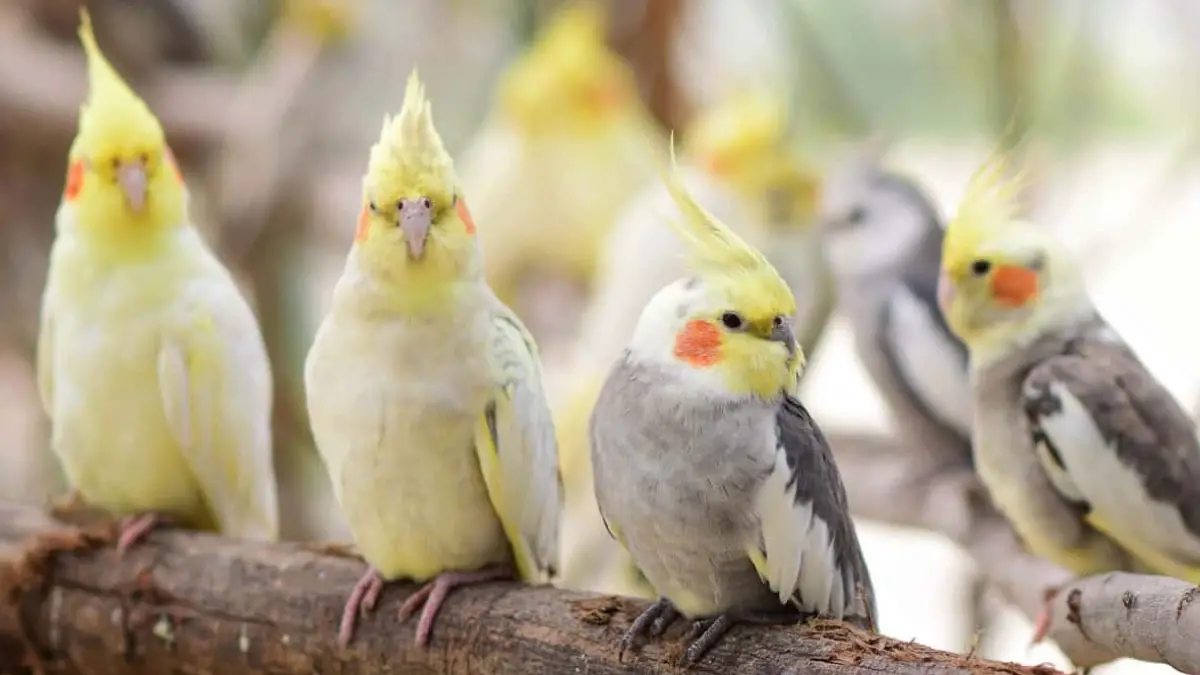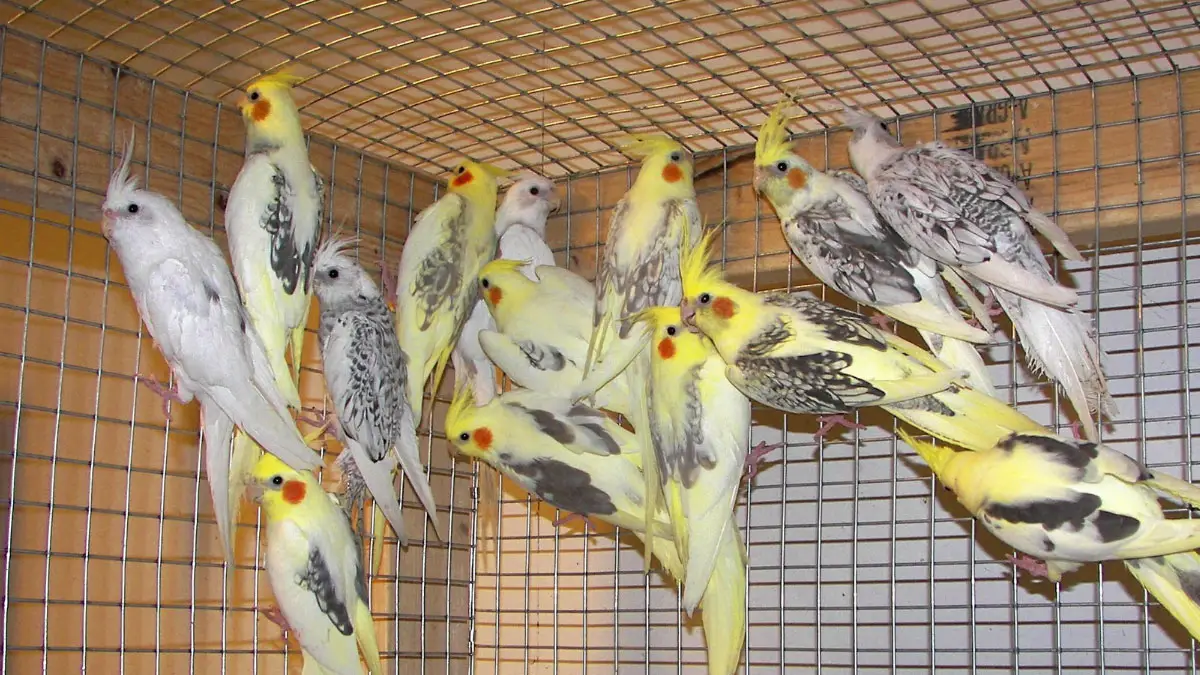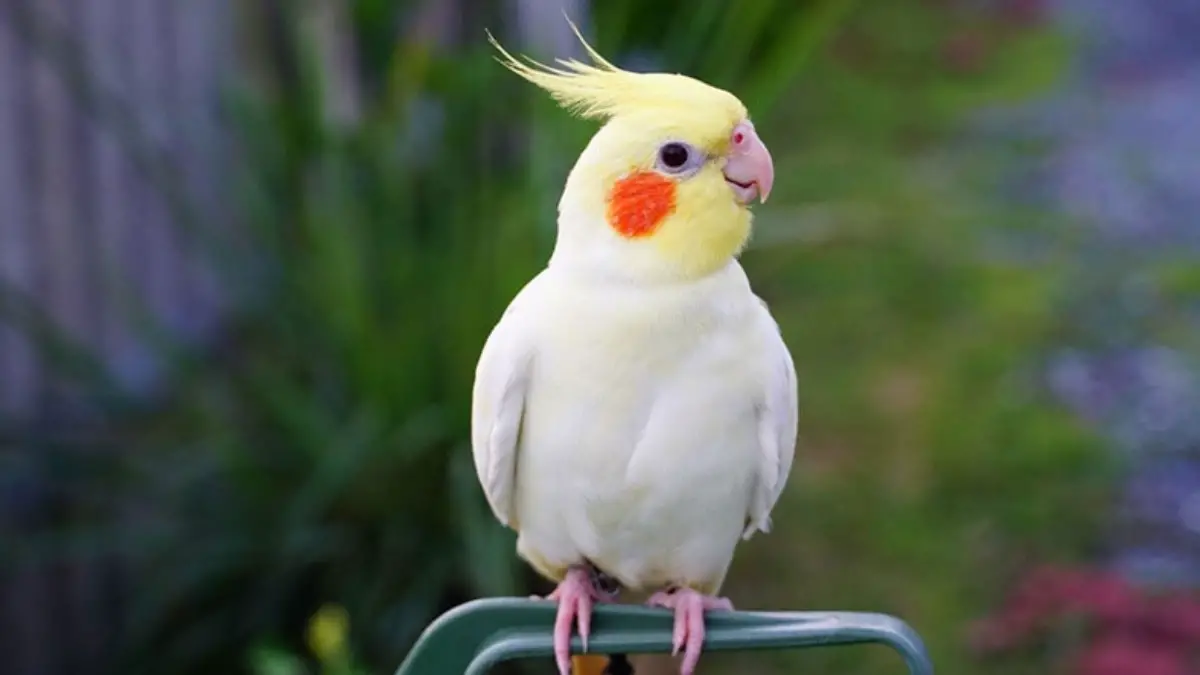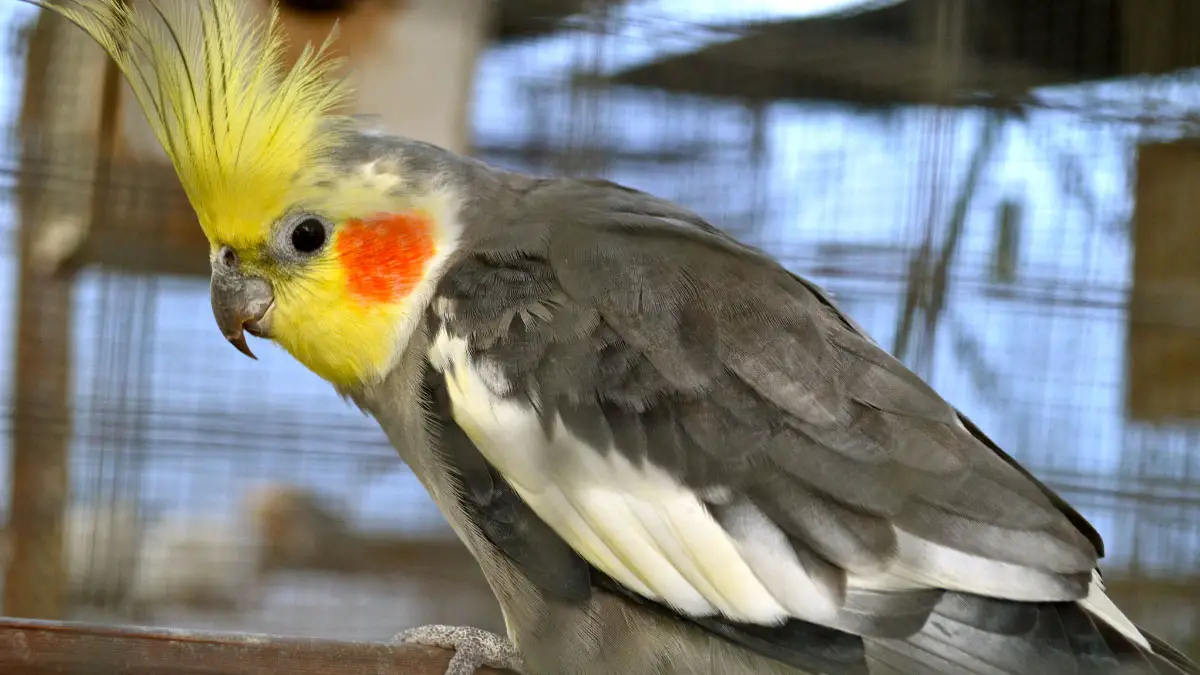Though cockatiels are excellent pet birds, their inappropriate housing can provoke them to misbehave. If you can ensure the appropriate size, design, and environment of the cage, this will keep the bird happy.
So, what is the appropriate cockatiel cage size and type? For an adult pet cockatiel or quarrion, cage size requirements are 24″L×24″W×24″H. But if you keep two of these birds together, pick a 36″L×24″W×24″H cage. Also, a wider cage is preferable to a taller cage for this bird.
In this article, we will discuss the size requirements of their cages. Also, after reading this article, understanding bird behavior and addressing their housing issues will be easier for you. So keep reading till the end.
Choosing An Appropriate Cage
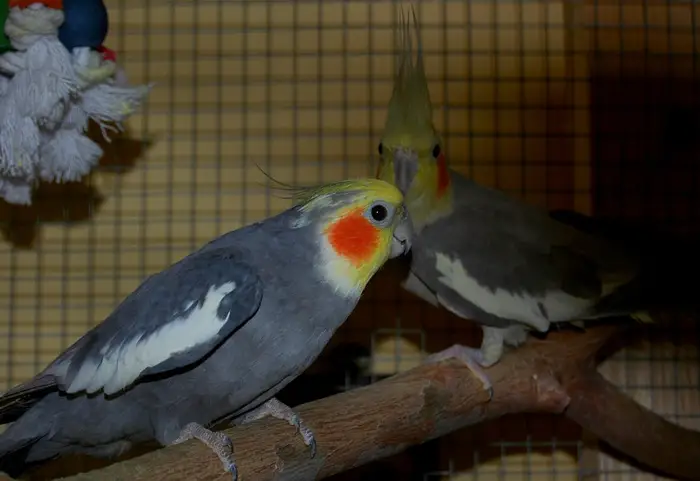
Nowadays, you will find multiple options for the bird cage with different construction materials and designs in the market. Here is a brief description of them:
- Steel cages: Steel cages can be durable for an extended period. But you must ensure that the material is coated with anti-corrosive material. Otherwise, oxidation will cause rusting of the cage material.
- Stainless steel cages: It is one of the most popular cage materials for its strength, long durability, and beautiful enclosure. A stainless steel cage will serve the best caging attributes in this case.
- Wire cages: If you choose any wire cage, ensure it’s galvanized to prevent corrosion.
- Acrylic cages: The prime advantage of this cage type is they look appealing and are less prone to debris containment. Yet, problems with proper ventilation may occur in acrylic cages.
Consideration While Choosing A Cage
Proper bird housing is necessary for the well-being of your pet cockatiels. While choosing the cage, you need to consider several factors, which are:
- You must choose a cage that will provide enough space for your bird to fly and move without hitting itself with the cage.
- Spaces between each cage bar should neither be too large nor small.
- The cage design shouldn’t have a sharp edge that may cause injury to your quarrion.
- Give priority to the width of the cages instead of their height.
To understand the requirements for a cockatiel cage better, check out this YouTube video:
Appropriate Location For Cage
You must place your bird cage in a suitable place for the wellness of the bird’s health. For example:
- Do not choose a dark spot for the cage placement, as your cockatiel may get scared or stressed out.
- Place the cage away from direct sunlight; it’s better to place it where natural light is available.
- Excessively noisy and populated areas might be stressful for your cockatiel. So, try to place the cage in any quiet place.
- A severe temperature change also causes health issues for this bird. So, the cage location shouldn’t be around any extreme temperature conditions.
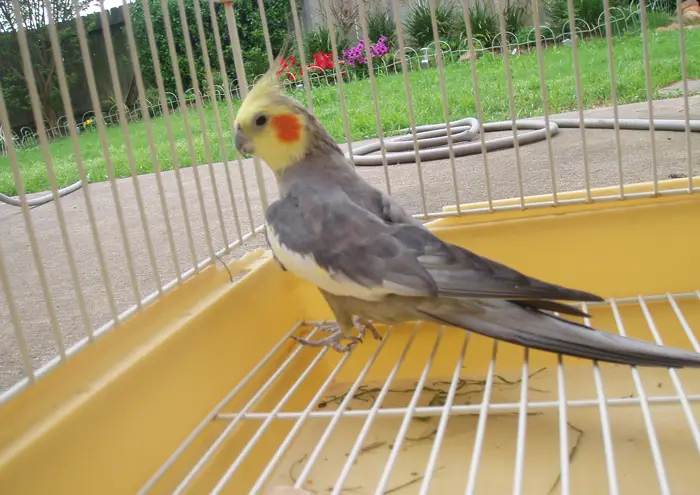
Ways To Create A Stimulating And Comfortable Environment
Bird cages and accessories are two interrelated things. You can create a stimulating environment in the cockatiel cage by choosing the proper accessories. These accessories will keep them mentally healthy as well as happy.
You may find different types of bird accessories in the market. But while choosing the suitable one, you need to keep in mind that:
- You can choose wooden or concrete perches for your bird’s cage. This will keep their feet well-functioning. But avoid buying those because the metal and plastic perches could be slippery.
- As they love to chew things, chew toys can make them happy.
- If you want to buy playing accessories for them, consider buying playing accessories that will make noise. They interact better with these types of accessories.
- Attaching feeding bowls to the cage will be a wise choice to ensure proper bird nutrition.
- Attaching different foraging bags can help to stimulate them.
Cage Size and Bar Spacing
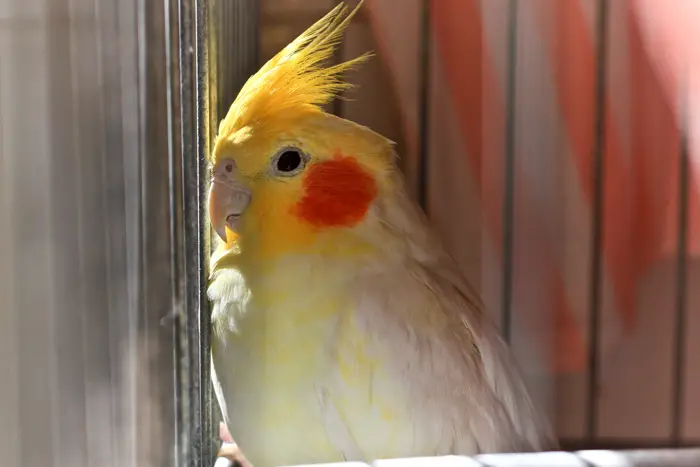
The requirements for the size of cages may differ with the bird’s size and activity level. Let’s know about these in detail:
Size
Generally, there are numerous cockatiel species and breeds. You may find Yellowface, Whiteface, Pearl, Lutino, Albino, Pied, Bronzefallow, normal, etc., breeds and species of this bird.
The size of this quarrion may differ slightly from species to species. But on average, an adult quarrion will be 12-14 inches long. This length typically refers to the distance between their crest’s tip and tail.
You need to choose a cage with dimensions of at least 2 times its size. Besides, make sure the horizontal length of the cage is 1.5-2 times the total wingspans of the bird. Generally, an adult quarrion may have wingspans of 12″.
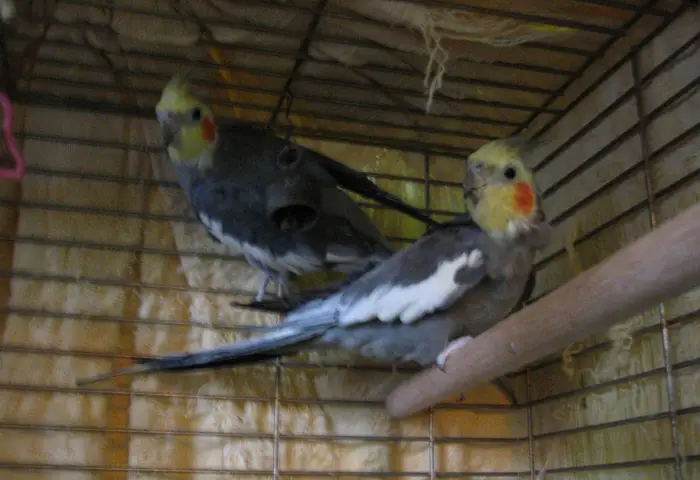
So, while choosing a cockatiel cage, you must ensure the cage has a minimum of 24 inches of dimension. Here are several considerations regarding the appropriate cage size for your quarrion:
- You need to pick a minimum 24″L×24″ W×24″ H cage for a single bird.
- If you have two birds, choose the cage with 36″L×24″W×24″ H.
- As a flight cage, choose a 144″ L× 48″ W× 96″ H cage for colonies.
- While traveling, if you want a travel cage for them for a small duration, you need to choose a square box of 12″ dimensions.
Bar Spacing
In the artificial cockatiel habitat, if the bar spacing is larger, your pet quarrion may escape. Also, your bird can trap its head between the bars and hurt itself severely.
Contrarily, if the spacing is too little, it may hamper the outside view for your birds. This will make your pet bird bored. So, the bar spacing shouldn’t be more than ¾” and less than ½”.
Appropriate Shape And Design For The Cage
While choosing the cage design and shape, consider these things:
- The shape of the cage shouldn’t hinder the wing flapping of the quarrion.
- Selecting a cage design covering 3 sides will provide privacy to your cockatiel while sleeping.
- You should choose a design with more horizontal space than height.
- If you keep more than two quarrions in the cage, the larger the space of the cage, the less they will show their territorial behavior.
- The shape and design of the cage shouldn’t have any pokey or sharp edge. Otherwise, your bird can get injured from the edge.
Addressing Common Housing Issues
Often, different types of occurrences can take place, which will hamper the cage safety of the cockatiels. Here are some common issues that take place:
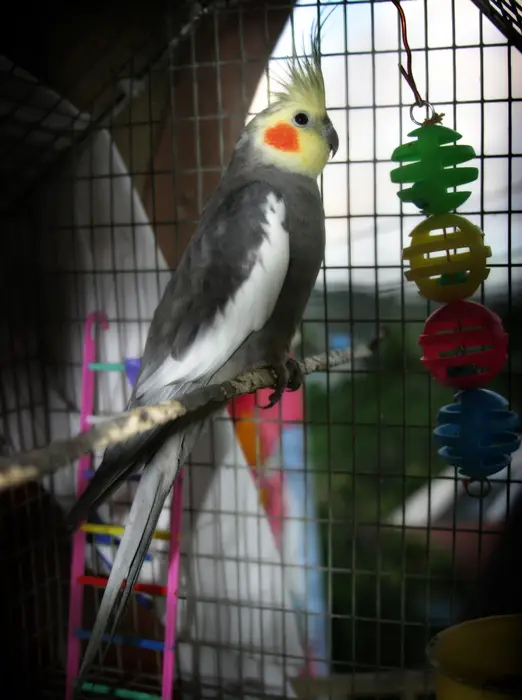
- Your quarrion can trip over the water or food bowls, spilling the food and water around the cage.
- The quarrions poop every 20 minutes and 18-26 times daily. So, cage cleaning will be a significant issue here.
- If you leave the cage uncleaned, it may cause different types of severe health problems in your pet birds.
- If the cage lock isn’t sturdy enough, the quarrion will escape from the cage.
Healthy Behavioral Development In Your Bird
If you expect healthy behavior from your pet bird, follow environmental enrichment techniques. This technique will include introducing new elements in the cage smoothly.
Besides it will also show ways of pet care, interacting, and socializing with them. Here are several methods to support the healthy behavior of the bird:
- Introduce climbing rope or other playing materials to encourage them to exercise.
- For their mental stimulation, you can keep the music turned on. Eventually, the cockatiels can start imitating the sounds of music.
- Try to talk to your pet bird often to create a bond and make interaction with it.
- Play games with your bird to teach it new things. Also, provide treats to it upon its learning of new tricks.
- If you can’t give your bird enough time, consider bringing another quarrion as a companion. Firstly, keep the new bird in another cage and slightly away from the former bird’s cage. Once they get along, place them together in a cage.
Addressing Cockatiel’s Housing-Related Behavioural Issues
Generally, bird health management is critical as you need to monitor their physical and behavioral changes. For their physical health management, there are numerous medications on the market. But the management of their behavior issues is relatively trickier.
Improper cage management can cause a change in bird behavior and multiple diseases. So, you need to detect the bird’s housing issues as soon as it occurs and need to address them.
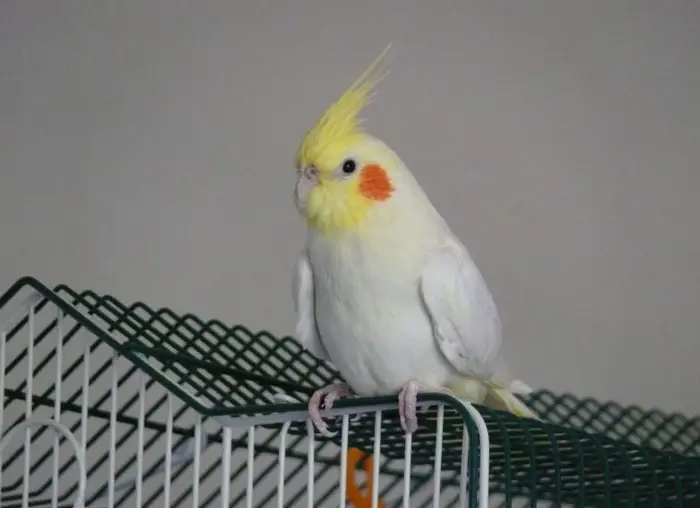
Here are several ways for that:
- Your quarrion can get frustrated in tiny cages and start screaming and biting. To prevent this, provide them with spacious and large-size cages.
- Eventually, they will start plucking their feathers when stressed out due to excessive noise or darkness. To prevent this, keep the cage away from noisy and dark places.
- If the bird starts plucking their feathers, ensure it can’t show its reflection in any mirror.
- While introducing new birds into the cage, carefully monitor their aggressive and territorial behavior. The risk of these types of behavior will be less if the cage is large enough.
FAQs
In this FAQs section, we will answer several familiar questions related to cockatiel housing.
You should move your quarrion out of the cage and clean the cage at least once every week. Then, you can use any mild bleach solution. But as it is toxic for them, you must rinse the lingering bleach well after cleaning.
Yes, you can keep more than one quarrion in a single cage if the cage is spacious enough. Also, to avoid territorial behavior from the birds, introduce each of them in the cage around at the same time.
Yes, you can indeed house your quarrions with other small bird species. If you keep large birds with your quarrions, they may get involved in territorial fights. Also, if the quarrions are young, it’s easier for them to adapt and share the cage with other birds.
To prevent the escaping of your quarrion, ensure the cage’s bar spacing isn’t more than 3/4 inches. If the bird escapes, contact the bird shelters, veterinary offices, and bird spotters. In case any of these offices find and bring your lost quarrion, you will get back your bird.
Providing colorful and new toys, foraging bags, and chewing elements will be great ways to their environmental enrichment. You can talk and spend time with your birds to enhance their socialization as well.
Conclusion
Every cockatiel owner should be considerate about the appropriate cage size if they don’t want to face the bird’s behavioral issues. Throughout this article, we discussed cockatiel cage size and type. You must choose a cage of a minimum of 24″L×24W”×24″H dimensions for an adult quarrion.
It is necessary because appropriate housing can keep your bird physically and mentally healthy. Thus, the more you will know about proper bird housing, the quicker you will be in addressing housing issues in pet birds.
